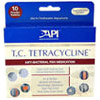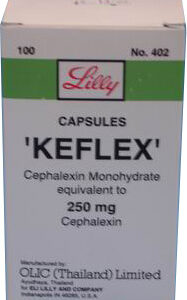Keflex Medication Synopsis
Keflex, known generically as cephalexin, belongs to the cephalosporin antibiotic class. It functions by halting the growth of bacteria. This medication is used to treat a broad array of bacterial infections, though it has no effect on viral infections such as the common cold or flu. Proper use of antibiotics can prevent the proliferation of resistant bacteria.
Indications for Keflex
Keflex is indicated for the treatment of numerous infections caused by susceptible strains of bacteria, including those of the respiratory tract, otitis media, skin and skin structure, bone, and genitourinary tract. Notably, Keflex is prescribed for conditions such as pneumonia, strep throat, tonsillitis, bone infections, and urinary tract infections among others.
Dosage and Administration
Dosing of Keflex varies based on the infection severity and patient factors. Typically, adults may be prescribed 250mg to 1000mg every 6 hours, while children’s dosages are calculated based on weight. Dosages may be adjusted for patients with renal impairment. It’s paramount that the full prescribed course be completed, even if symptoms vanish. Abrupt cessation may permit bacteria to continue to grow, which may result in a return of the infection.
Contraindications and Precautions
Keflex is contraindicated in patients with known hypersensitivity to cephalexin or other members of the cephalosporin class. Caution should be exercised when prescribing Keflex to individuals with a history of gastrointestinal disease, particularly colitis, or those who have shown a hypersensitivity to penicillins, as cross-sensitivity among beta-lactam antibiotics can occur.
Drug Interactions
Care should be taken when Keflex is co-administered with other medications. Combining Keflex with potent diuretics or aminoglycosides can affect kidney function. Concurrent use with metformin can increase the risk of lactic acidosis. Interactions with anticoagulants can also alter the anticoagulant effect. Always consult a healthcare provider for comprehensive advice regarding potential drug interactions.
Adverse Effects
The therapy with Keflex may lead to a spectrum of adverse effects, ranging from mild to severe. Common reactions comprise gastrointestinal upset, such as diarrhea, nausea, vomiting, and dyspepsia. Hypersensitivity reactions including skin rashes, urticaria, and angioedema may occur. More grave concerns, although rare, include anaphylaxis, Stevens-Johnson syndrome, and toxic epidermal necrolysis.
Clinical Pharmacology
Cephalexin, the core constituent of Keflex, is bactericidal and operates by interrupting the synthesis of the bacterial cell wall. It holds a broad spectrum of activity against gram-positive bacteria and a limited range of gram-negative bacterial pathogens.
Pharmacokinetics of Keflex
Keflex exhibits absorption from the gastrointestinal tract and is not significantly impacted by food. It has a half-life averaging around 1 hour and is largely excreted unchanged in the urine. Its pharmacokinetics can be influenced by renal function, requiring dosage adjustment in cases of renal impairment.
Use in Special Populations
Particular populations necessitate special consideration when administering Keflex. Pregnancy category B suggests no fetal harm in animal studies, but pregnant women should only take it if clearly needed. Caution is advised when prescribing to nursing mothers. The elderly and those with renal impairment may require dose adjustments.
Overdosage and Management
Overdosage with Keflex can lead to gastrointestinal discomfort, including nausea, vomiting, and diarrhea. Should an overdose occur, treatment is supportive and symptomatic. In instances of severe renal compromise, hemodialysis may aid in drug removal from the body.
Storage and Handling
Maintain Keflex capsules in a tightly sealed container, away from moisture and heat, at room temperature. Suspensions, post reconstitution, should be refrigerated and discarded after 14 days. Elevate awareness of properly disposing unused or expired medication to prevent accidental ingestion or environmental harm.
Patient Counseling Information
Patient education is key in the use of Keflex. Patients should be counseled on taking the entire course of the medication, even if they feel better. They should be informed of potential side effects and instructed to report any signs of hypersensitivity or severe reactions. Discussing non-antibiotic alternatives for symptom relief, such as pain relievers for throat discomfort, can also be beneficial.






Reviews
There are no reviews yet.